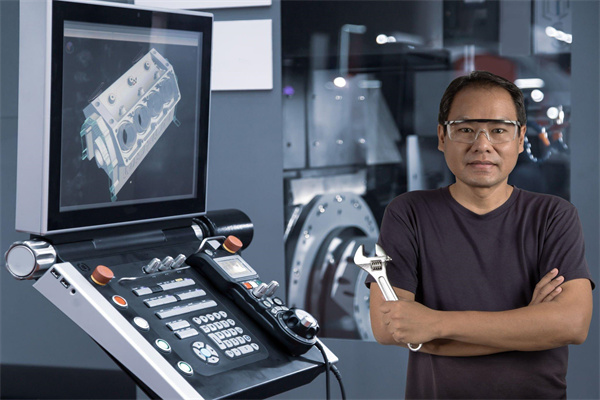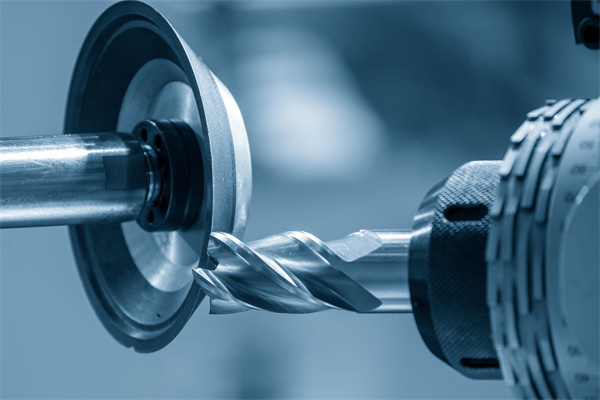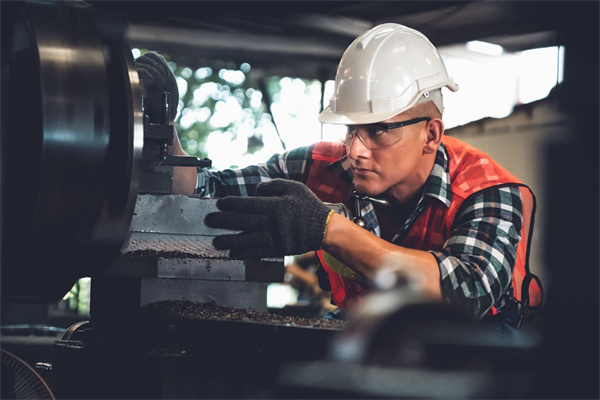[lwptoc]
introduction
Introduction to Machining
Machining is a manufacturing process that involves the cutting, drilling, turning, and shaping of metals, plastics, and other materials. It is a versatile process that can produce complex three-dimensional shapes with high accuracy. Machining is a critical part of the production process, providing components essential to many industries, including the automotive, aerospace, medical, and energy sectors.
This article will discuss the three basic machining processes: turning, drilling, and milling. We’ll explain what each of these processes entails and how they produce components used in various industries.
Turning
Turning is a machining process that involves rotating a workpiece on a spindle while a cutting tool is fed into the workpiece. This process produces cylindrical and conical shapes, such as shafts, spindles, and bushings. Turning is often used to create components for the automotive and aerospace industries, such as gears, pistons, and bearings.
Drilling
Drilling is a machining process that involves using a rotary cutting tool to create a hole in a workpiece. This process creates components such as pipes, valves, and fittings. Drilling is often used in the automotive, aerospace, and medical industries to create components such as fuel tanks and medical implants.
Milling
Milling is a machining process that involves using a rotary cutting tool to remove material from a workpiece. This process is used to produce a variety of components, such as gears, couplings, and screws. Milling is often used in the automotive and aerospace industries to produce components such as engine blocks, turbine blades, and valves.
Conclusion
In conclusion, machining is a manufacturing process that produces components for various industries. The three basic machining processes are turning, drilling, and milling. Each process has unique characteristics that make it suitable for producing components for the automotive, aerospace, medical, and energy sectors.
principle of machining
Machining is one of the most important processes for producing parts or components. It is a process of removing material from a workpiece using a cutting tool. Machining involves using tools, such as drills, lathes, and milling machines, to cut away unwanted material and create intricate shapes and sizes.
The machining principle is based on the fact that material can be removed from a workpiece by applying a cutting force or pressure to it with a tool. This process is known as ‘cutting’,; the material removed is known as ‘chips.’ Depending on the workpiece type and the machined material, the process used to remove the material can differ.
There are three basic machining processes; turning, drilling, and milling. Turning is the most common machining process and involves the rotation of the workpiece, while a cutting tool is used to remove material. Drilling involves machining a hole in a workpiece, while milling is machining flat or curved surfaces.
Turning is used in producing parts such as round rods and shafts, as well as components like gears, bolts, and screws. Drilling is used to creating holes in a workpiece and is often used to produce engine components. Finally, milling creates flat or curved surfaces and slots or grooves in a workpiece.
The cutting tool type and the cutting process’s speed play an important role in machining. Different types of cutting tools are used depending on the material being machined. For example, high-speed steel cutting tools are used in machining steel workpieces, while tungsten carbide tools are used for machining harder materials.
The speed of the cutting process is also important; the faster the cutting process, the greater the amount of material removed from the workpiece. This is why machining processes are often automated, as automation allows for greater speed and precision.
Machining is an essential process in the manufacturing industry, as it enables the production of precise parts or components with a high level of accuracy and detail. Manufacturers can produce components with exact dimensions and tolerances using the correct cutting tools and speeds.
Overall, machining is a complex process that requires knowledge and precision. It is important to understand the principle of machining and the three basic processes – turning, drilling, and milling – to ensure that the desired results are achieved. By understanding the process and applying the right tools and speeds, manufacturers can produce precision parts and components with high levels of accuracy and detail.
types of machining
The manufacturing industry has come a long way since its inception, with technology and advancements in the machining processes. In the most basic sense, machining is cutting and shaping the material into a desired shape and size. It encompasses many operations, but all processes involve cutting, drilling, grinding, and finishing. Machining processes can produce parts of all shapes, sizes, and materials, from the most complex and intricate designs to the simplest components.
When it comes to machining processes, there are three basic types: turning, milling, and drilling. Each process shapes and creates parts and components for various industries, and each has its unique advantages and disadvantages. This article will look at the three basic machining processes in more detail and how each can benefit your business.
Turning is a machining process that is used to create cylindrical components. It is often used in applications where parts need to be turned at precise angles for specific applications. The process involves rotating a component by placing it in a lathe and rotating it along its longitudinal axis. While the process can create various complicated shapes, it primarily produces cylindrical components such as shafts, bolts, and rods.
Milling is a machining process used to create flat and curved shapes. A milling machine cuts material with a rotary cutting tool. The tool is stationary while the material is rotated, and the cutting tool is moved along the material to create the desired shape. The process creates components of all shapes and sizes and can be used to create intricate and complex designs.
Drilling is a machining process used to create holes in materials. The process involves using a drill bit to cut through a material to create a hole. Drilling is used to create components with various hole sizes and shapes. It is also used in threading, tapping, and reaming applications.
These are the three basic machining processes used in the manufacturing industry. Each has advantages and disadvantages, and each process creates parts and components for various industries. Understanding the different machining processes and how each can benefit your business can help you create parts and components that meet your specific needs.
advantages of machining
When it comes to manufacturing, machining is an essential process for creating components and parts. It is used in various industries and can be used to create complex designs with little effort. In this blog, we will discuss the advantages of machining and explore the three basic machining processes.
Machining is a process that involves cutting or shaping metal or other materials using a variety of tools such as drills, lathes, milling machines, and grinding machines. It is a preferred manufacturing method because it is fast, precise, and cost-effective. Here are some of the advantages of machining:
Efficiency: One of the biggest advantages of machining is its efficiency. Using a machine tool, you can create components and parts with high accuracy and precision in a relatively short time. This means that you can create a large number of parts quickly, allowing you to meet production deadlines and reduce production costs.
Quality Control: Machining also allows for high-quality control. By using computerized numerical control (CNC) machines, you can program the exact dimensions, shapes, and tolerances of the part you are creating. This ensures that the parts are consistent and of the highest quality.
Cost Savings: Machining is cost-effective, requiring less labor and materials than other manufacturing methods. It also requires less energy, as the machine tools used in the process are highly efficient. This means you can reduce production costs and increase profit margins.
Now that we have discussed the advantages of machining, let’s look at the three basic machining processes. The three basic machining processes are turning, drilling, and milling.
Turning is a machining process that involves rotating a workpiece to shape and form the material. This process creates round parts such as cylindrical shafts, bolts, and screws.
Drilling is a machining process that involves using a cutting tool to create a hole in the workpiece. This process creates holes for bolts, screws, and other fasteners.
Milling is a machining process that involves using a cutting tool to remove material from the workpiece. This process creates complex shapes, such as grooves, slots, and keyways.
In conclusion, machining is a cost-effective and efficient manufacturing process with numerous advantages. It is a great choice for creating components and parts with high accuracy and precision. Furthermore, the three basic machining processes – turning, drilling, and milling – can create various shapes and sizes. Machining may be the perfect choice if you are looking for a cost-effective manufacturing solution
conclusion
Conclusion: Summary and Benefits of Machining Processes
Machining is an essential manufacturing process used to shape and form components. This process removes material from workpieces to create precise shapes and features. There are three basic machining processes: drilling, turning, and milling. These processes can produce highly accurate components with great precision and repeatability.
Drilling is used to creating holes in a workpiece. It is a relatively simple process that can be done quickly and accurately. Turning is used to produce round shapes and features. It is one of the most precise machining processes and can produce components with high accuracy and repeatability. Finally, milling is used to produce complex shapes and features. It is more complex than drilling and turning but can produce components with great accuracy and repeatability.
Get the complete solution. ↓
The benefits of machining processes are numerous. Machining processes are highly precise and repeatable, making them ideal for producing components with exact specifications. In addition, machining processes are relatively fast and require minimal setup time. This makes them ideal for producing large volumes of components. Finally, machining processes produce components with a high degree of accuracy, making them ideal for critical components.
In conclusion, machining processes are essential for producing precise components with great accuracy and repeatability. There are three basic machining processes: drilling, turning, and milling. Depending on the job at hand, each of these processes can be used to produce components with a high degree of precision and repeatability. The benefits of these machining processes are numerous, making them ideal for producing large volumes of components with exact specifications.










